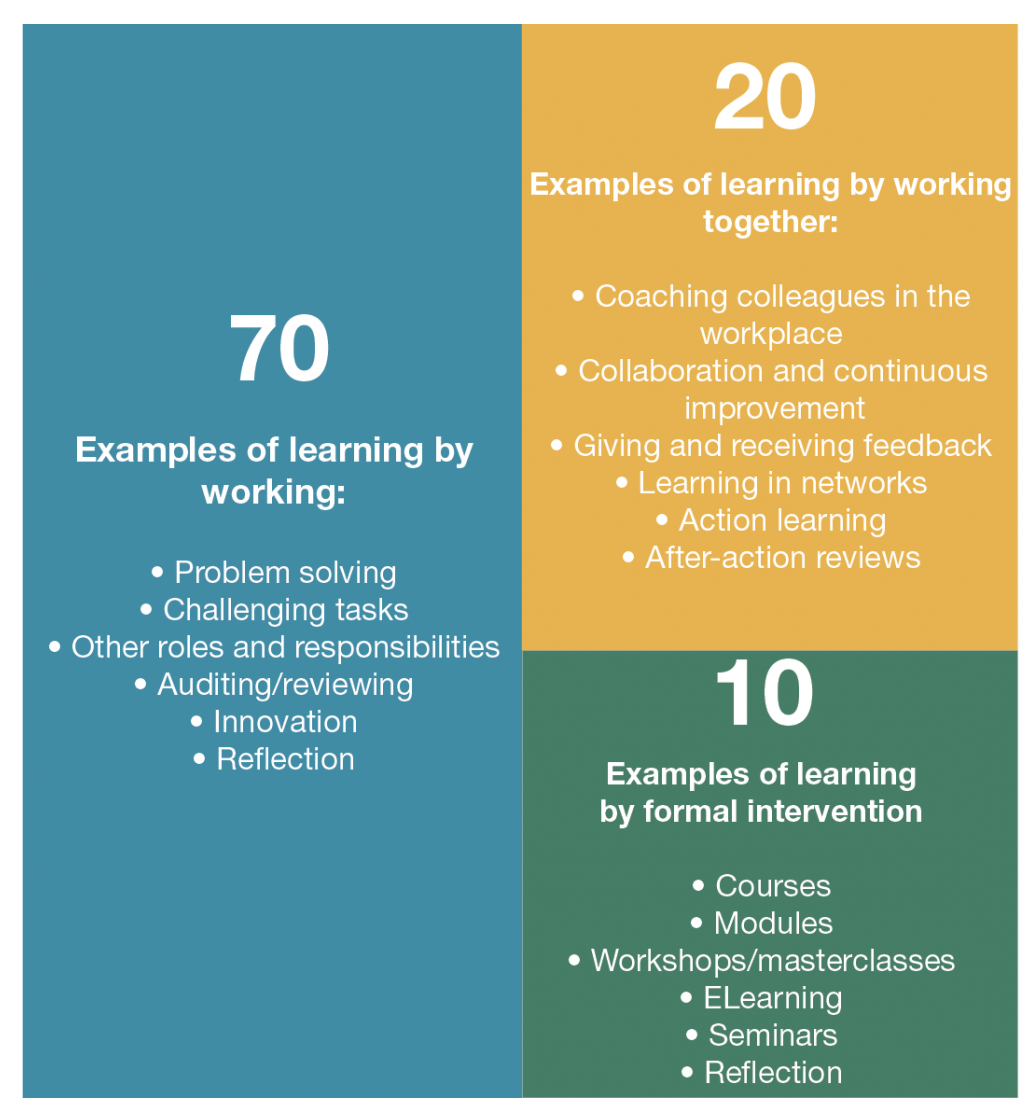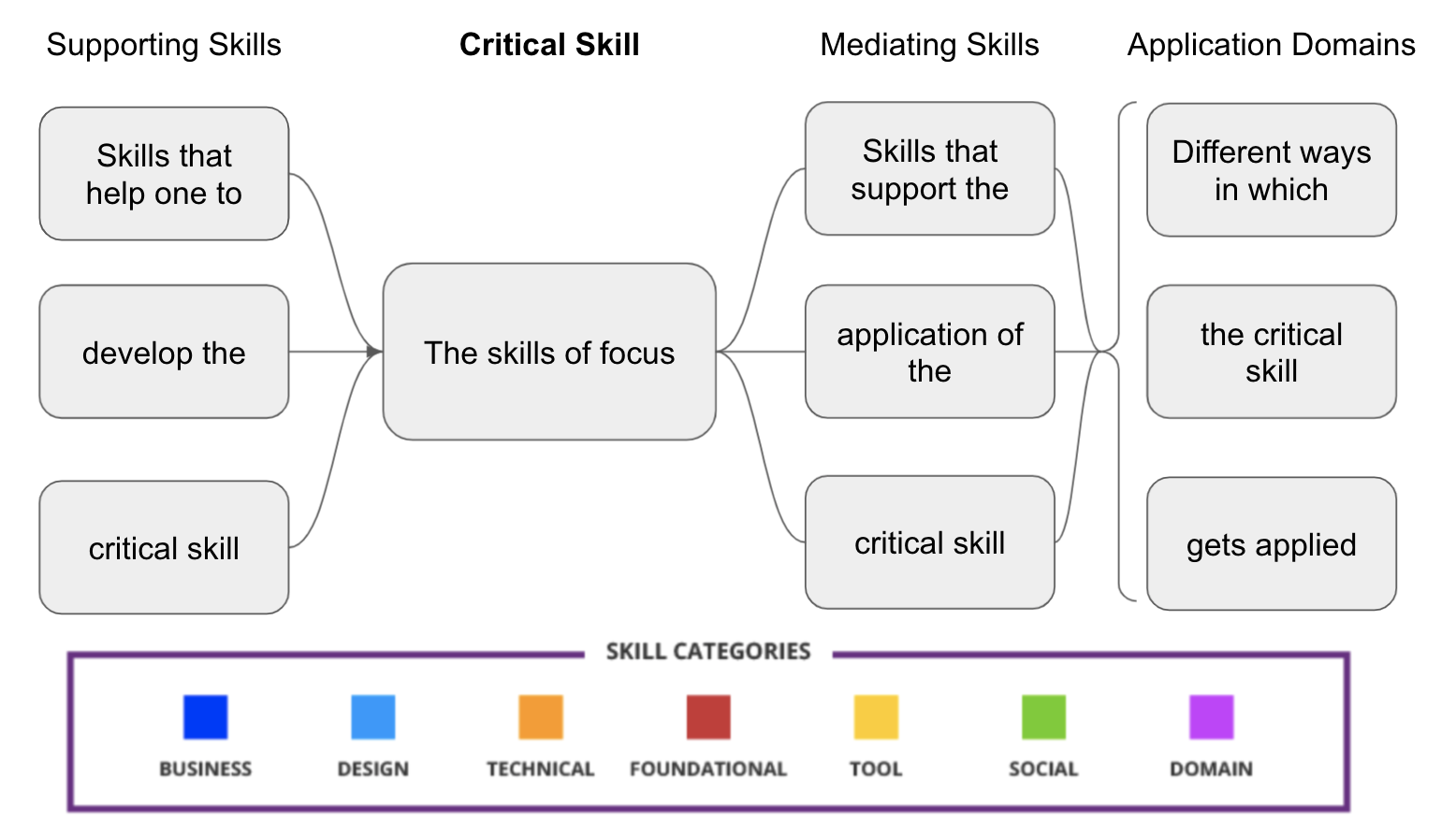Critical Skills - How to develop critical skills
Steven Forth is co-founder and managing partner at Ibbaka. See his skill profile here.
Posts on critical skills draw a lot of readers on this blog. People are interested in what skills they need to develop and how these different skills combine to create value. Knowing what the critical skills are is just the first step though. One needs a plan to develop them and put them to work. How does one do that?
Please take our survey on leveraging organizational skills and competencies to create value
One way to frame this is through the 70:20:10 model. This model says that
70 percent of learning comes from experience, experiment and reflection.
20 percent derives from working with others.
10 percent comes from formal interventions and planned learning solutions.
From the 702010 Institute website.
Given this, start with the 70% that has the biggest impact. At Ibbaka, we think of this in two ways, as project based learning and as role based learning.
Project based learning happens when you get on the projects that will challenge you and force you to learn new skills. Sometimes these projects are part of the normal work process. Many innovation projects are also learning projects. In other cases, organizations design projects with the specific intent of driving skill development.
I was on one such project earlier this year. We were building some complex models and the people who normally do this work were otherwise engaged. One offered to give me some coaching and I got to build an actual model in Tensorflow. I doubt I will ever do this again, but Ibbaka is likely to make more and more use of platforms like Keras (an open-source deep learning library) and Tensorflow (an open-source neural network library) in order to have some hands on experience.
Role based learning is also a compelling way to build new skills. There are several distinct approaches here, from apprenticeship and role shadowing to role doubling and role sharing.
An apprenticeship model can be compelling when there is time available and many of the skills are tacit (skills that are difficult to express or extract, and thus more difficult to transfer to others by means of writing or verbalizing). There is a long tradition of apprenticeship in the skilled trades, and as innovation moves deeper into manufacturing there will be more opportunities for apprentices for knowledge workers.
Sometimes there is no need for a formal apprenticeship program and role shadowing will provide the basic skill transfer. Working alongside another person in the same or a related role is one of the best ways to learn.
One way this can be done is through role doubling, where two people perform the same role in parallel, or role sharing, where the skills required to perform a role are contributed by two people, each of whom has only some of the skills required.
Note that reflection plays an important role in the learning that is rooted in experiences. Reflection is so important that it is one of Ibbaka’s critical skills. You can learn more about the importance of reflection here.
Reflection contributes to an understanding of one’s own learning style. Learning styles are not the old approach of visual, auditory, reading/writing and kinesthetic. Modern learning theory looks at how people combine different approaches to learning to create something that is unique to them. For example, my own learning style can be summarized as
Abstract - I am a model maker
Historical - I need to know origins
Social - I learn best with other people
Written - I need to write in order to learn
Applied - I learn by doing (a combination of my social and writing attributes)
Take some time now to reflect on your own learning style.
One of Ibbaka’s key insights into skills is that all skills exist in context and take on meaning through their connections to other skills. This is why we put so much effort into building out our skill graph.
Skill graph: a network of skills and the connections between them. Ibbaka’s skill graph connects each skill to its parent skills, child skills, associated skills and complementary skills. In addition to skills, the skill graph can include people, applications of the skill, jobs, roles, activities, tasks and so on. By representing the connections between skills in this way tools from graph theory, social network analysis and semantic reasoning can be applied.
Every skill has connections to other skills. The pattern of these connections is unique to each individual. It represents one’s skill DNA so to speak.
When developing critical skills, it is important to build connections with other skills. This is how one embeds and activates new abilities.
One template for connecting skills (there are others)
By connecting skills to other skills, to people, to applications, one makes the skills part of the structure of ones mind and ones social network. This improves recall and opens new avenues for application.
Skills
People
Applications
These are the connection points that support the development of critical skills.
Ibbaka posts on critical skills
Critical Skills for 2022 - First Impressions of Survey Results
Critical Skills - Generative Thinking (Interview with GK VanPatter)
Critical Skills - How to Develop Critical Skills (this post)
Critical Skills for the Future of Work - Managing Trade Offs
Critical Skills for the Future of Work - What are the Critical Skills?




